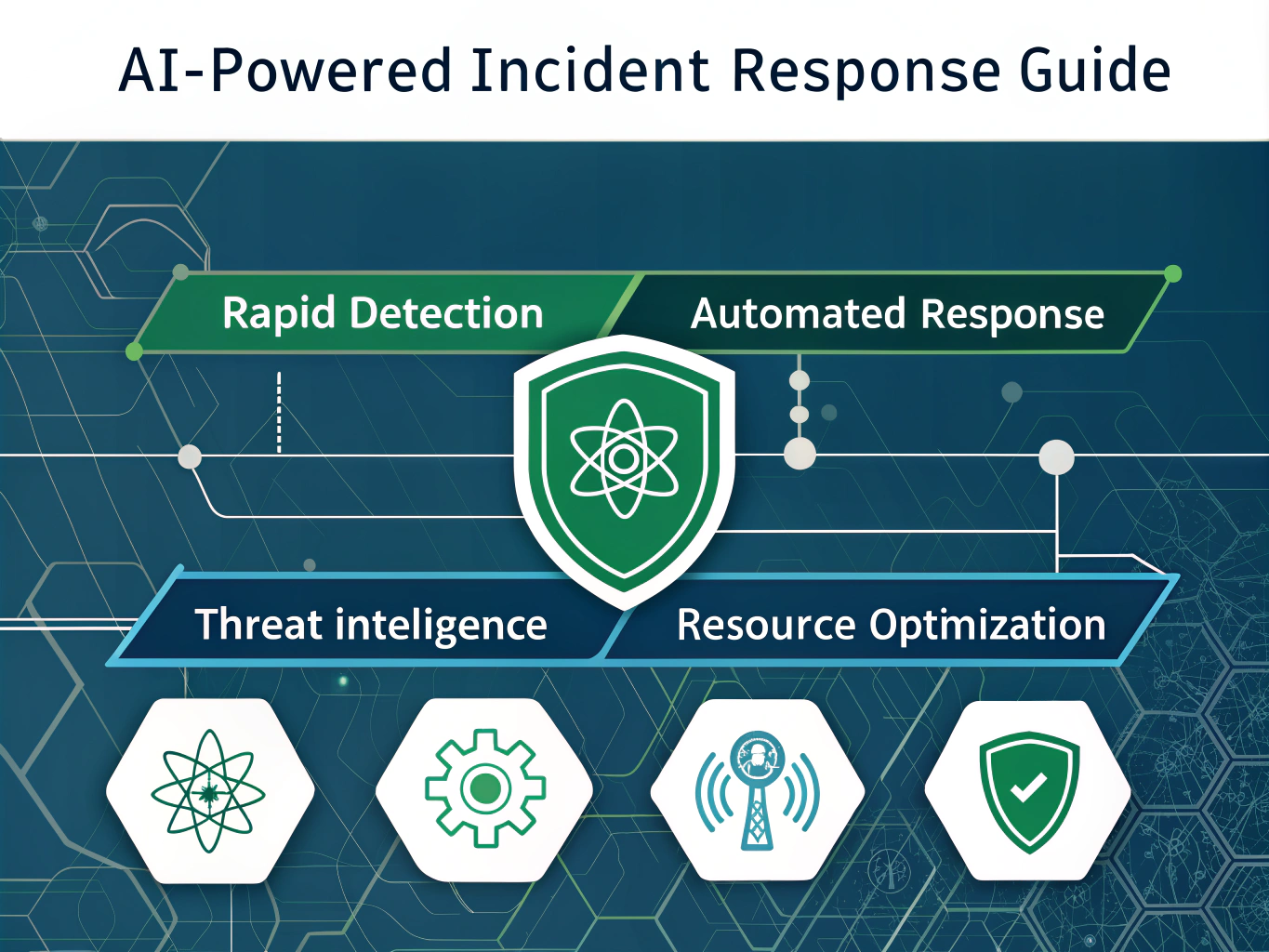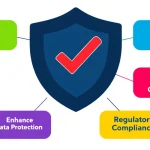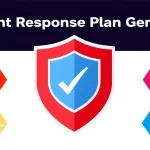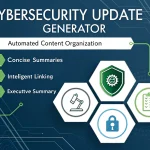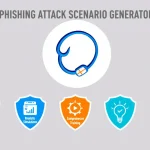AI Implementation Guide for Incident Response
Is this tool helpful?
How to Use the AI Implementation Guide for Incident Response Generator
To effectively use the AI Implementation Guide for Incident Response Generator, follow these steps:
- Enter Organization Name (Optional): In the first field, input your organization’s name. For example, you could enter “CyberShield Technologies” or “Global Defense Systems.”
- Describe Existing Framework (Optional): In the second field, briefly outline your current incident response framework, if any. For instance, you might enter “ISO 27035 Incident Management Process” or “Custom in-house framework based on SANS Institute guidelines.”
- Specify Challenges and Requirements (Optional): In the third field, detail any specific challenges or requirements for AI implementation in your incident response process. Examples could include “Need for automated threat intelligence correlation” or “Integration with legacy security information and event management (SIEM) systems.”
- Generate Guide: Click the “Generate AI Implementation Guide” button to create your customized implementation plan.
- Review Results: Once generated, the AI Implementation Guide will appear in the result section below the form.
- Copy to Clipboard: Use the “Copy to Clipboard” button to easily save and share your generated guide.
Revolutionizing Cybersecurity: The AI Implementation Guide for Incident Response
In an era where cyber threats are evolving at an unprecedented pace, organizations are turning to artificial intelligence (AI) to bolster their incident response capabilities. The AI Implementation Guide for Incident Response Generator is a cutting-edge tool designed to assist cybersecurity professionals in seamlessly integrating AI technologies into their existing incident response frameworks.
This innovative generator creates tailored implementation guides that address the unique challenges and requirements of each organization. By leveraging the power of AI, companies can significantly enhance their ability to detect, analyze, and respond to security incidents with greater speed and accuracy.
The Growing Importance of AI in Incident Response
As cyber attacks become more sophisticated and frequent, traditional incident response methods are often overwhelmed by the sheer volume and complexity of threats. AI-powered incident response offers a promising solution to this challenge, providing the following key benefits:
- Rapid threat detection and analysis
- Automated triage and prioritization of incidents
- Enhanced pattern recognition and anomaly detection
- Improved incident prediction and proactive defense
- Streamlined incident response workflows
By implementing AI in incident response, organizations can significantly reduce their mean time to detect (MTTD) and mean time to respond (MTTR) to security incidents, ultimately minimizing the potential impact of cyber attacks.
Benefits of Using the AI Implementation Guide Generator
1. Customized Implementation Strategies
One of the primary advantages of using this generator is its ability to create tailored implementation guides. By considering your organization’s specific context, existing frameworks, and unique challenges, the tool produces a customized roadmap for integrating AI into your incident response processes.
2. Time and Resource Efficiency
Developing a comprehensive AI implementation strategy from scratch can be a time-consuming and resource-intensive process. This generator streamlines the planning phase, allowing your team to focus on execution rather than extensive research and strategizing.
3. Best Practices and Industry Standards
The AI Implementation Guide Generator incorporates the latest best practices and industry standards in AI-powered incident response. This ensures that your organization benefits from cutting-edge approaches and methodologies in cybersecurity.
4. Scalability and Adaptability
As your organization grows and evolves, so too will your incident response needs. The generated guides provide scalable and adaptable strategies that can be adjusted to meet changing requirements and technological advancements.
5. Enhanced Decision-Making
By providing a structured approach to AI implementation, this tool empowers cybersecurity leaders to make informed decisions about technology investments, resource allocation, and process improvements.
Addressing User Needs and Solving Specific Problems
The AI Implementation Guide for Incident Response Generator addresses several critical challenges faced by organizations in today’s cybersecurity landscape:
1. Overcoming Information Overload
Many security operations centers (SOCs) struggle with an overwhelming volume of alerts and log data. The AI implementation guide provides strategies for leveraging machine learning algorithms to filter, categorize, and prioritize this information, enabling analysts to focus on the most critical threats.
2. Reducing False Positives
False positives can waste valuable time and resources. The guide outlines methods for implementing AI-powered anomaly detection and behavioral analysis to improve the accuracy of threat detection and reduce false alarms.
3. Accelerating Incident Response
In cybersecurity, time is of the essence. The generated guide includes recommendations for automating various aspects of the incident response process, such as initial triage, containment actions, and post-incident reporting, thereby significantly reducing response times.
4. Enhancing Threat Intelligence
The implementation guide addresses the challenge of staying ahead of emerging threats by incorporating AI-driven threat intelligence gathering and analysis. This enables organizations to proactively adapt their defenses based on the latest threat landscape.
5. Addressing Skills Shortages
With the global cybersecurity skills shortage, many organizations struggle to maintain adequate staffing for their incident response teams. The guide provides strategies for using AI to augment human capabilities, allowing existing staff to work more efficiently and effectively.
Practical Applications and Use Cases
To illustrate the practical value of the AI Implementation Guide for Incident Response Generator, consider the following use cases:
1. Financial Services Company
A large bank, “GlobalBank,” uses the generator to create an implementation plan for integrating AI into their existing NIST-based incident response framework. The generated guide recommends:
- Implementing machine learning algorithms to detect anomalous transaction patterns in real-time
- Developing an AI-powered chatbot to assist in initial incident triage and guide first responders through preliminary steps
- Utilizing natural language processing to analyze threat intelligence feeds and automatically update firewall rules
By following this guide, GlobalBank reduces its average incident response time by 40% and improves its ability to detect sophisticated financial fraud attempts.
2. Healthcare Provider
“MediCare Hospital” uses the generator to develop an AI implementation strategy focused on protecting sensitive patient data. The customized guide suggests:
- Deploying AI-powered user and entity behavior analytics (UEBA) to detect unusual access patterns to electronic health records
- Implementing automated threat hunting using machine learning to identify potential data exfiltration attempts
- Creating an AI-assisted incident playbook system to ensure compliance with HIPAA breach notification requirements
As a result, MediCare Hospital enhances its ability to protect patient privacy and maintain regulatory compliance while reducing the workload on its understaffed IT security team.
3. E-commerce Platform
“ShopSmart,” an online retail platform, utilizes the generator to improve its incident response capabilities during high-traffic periods. The generated guide recommends:
- Implementing AI-powered DDoS mitigation to automatically detect and respond to volumetric attacks
- Utilizing machine learning algorithms to identify and block bot-driven credential stuffing attacks in real-time
- Developing an AI system to correlate customer complaints with potential security incidents, enabling faster detection of account takeovers
By implementing these recommendations, ShopSmart significantly improves its resilience to cyber attacks during peak shopping seasons, maintaining customer trust and minimizing financial losses.
Frequently Asked Questions (FAQ)
Q1: What types of organizations can benefit from this AI Implementation Guide Generator?
A1: This generator is designed to be valuable for organizations of all sizes and across various industries. Whether you’re a small startup, a mid-sized enterprise, or a large multinational corporation, the generated guides can be tailored to your specific needs and existing cybersecurity infrastructure.
Q2: Do I need extensive AI expertise to use this generator?
A2: No, extensive AI expertise is not required to use this generator. The tool is designed to provide clear, actionable guidance that can be understood and implemented by cybersecurity professionals with varying levels of AI knowledge. However, some familiarity with basic AI concepts and incident response processes is beneficial.
Q3: How often should I update my AI implementation strategy?
A3: It’s recommended to review and update your AI implementation strategy regularly, ideally on an annual basis or whenever there are significant changes in your organization’s infrastructure, threat landscape, or available AI technologies. You can use the generator to create updated guides as needed.
Q4: Can the generated guide help with regulatory compliance?
A4: Yes, the AI Implementation Guide Generator takes into account various regulatory requirements related to incident response. The generated guides can include recommendations for ensuring compliance with relevant standards such as GDPR, HIPAA, PCI DSS, and others, depending on your industry and location.
Q5: What if my organization already has some AI tools in place for incident response?
A5: The generator is designed to accommodate organizations at various stages of AI adoption. If you already have some AI tools in place, you can mention this in the “Existing Framework” field, and the generated guide will provide recommendations for optimizing and expanding your current AI capabilities.
Q6: How does AI improve threat detection compared to traditional methods?
A6: AI enhances threat detection by analyzing vast amounts of data at high speeds, identifying subtle patterns and anomalies that might be missed by human analysts or rule-based systems. Machine learning algorithms can adapt to new threats more quickly than traditional signature-based detection methods, improving the overall effectiveness of threat detection.
Q7: Can the implementation guide help with integrating AI into our existing security tools?
A7: Yes, the generated guides typically include recommendations for integrating AI capabilities into existing security infrastructure, such as SIEM systems, firewalls, and endpoint protection platforms. This ensures a cohesive and efficient security ecosystem that leverages both traditional and AI-powered tools.
Q8: What are some potential challenges in implementing AI for incident response?
A8: Common challenges include data quality issues, integration with legacy systems, staff training, and managing false positives/negatives. The generated implementation guide addresses these challenges and provides strategies to overcome them, ensuring a smooth transition to AI-enhanced incident response.
Q9: How can AI help in post-incident analysis and reporting?
A9: AI can significantly enhance post-incident analysis by automatically correlating events, identifying root causes, and generating comprehensive reports. Machine learning algorithms can also analyze historical incident data to identify trends and provide insights for improving future incident response strategies.
Q10: Is it possible to measure the ROI of implementing AI in incident response?
A10: Yes, the ROI of AI implementation in incident response can be measured through various metrics such as reduction in mean time to detect (MTTD) and mean time to respond (MTTR), decrease in successful attacks, improvement in analyst productivity, and reduction in financial losses due to security incidents. The generated guide may include recommendations for establishing these performance metrics.
Conclusion: Empowering Your Cybersecurity Strategy with AI
The AI Implementation Guide for Incident Response Generator is a powerful tool that empowers organizations to harness the full potential of artificial intelligence in their cybersecurity efforts. By providing customized, actionable strategies, this generator enables businesses to:
- Enhance their threat detection and response capabilities
- Optimize resource allocation in their security operations
- Stay ahead of evolving cyber threats
- Improve compliance with regulatory requirements
- Build a more resilient and adaptive cybersecurity posture
As the cyber threat landscape continues to evolve, the integration of AI into incident response processes is becoming not just an advantage, but a necessity. By leveraging this generator, organizations can take a significant step towards future-proofing their cybersecurity strategies and ensuring they remain resilient in the face of increasingly sophisticated cyber attacks.
Remember, the journey to AI-powered incident response is ongoing. Regularly revisiting and updating your implementation strategy using this generator will help ensure that your organization remains at the forefront of cybersecurity innovation, ready to face the challenges of tomorrow’s digital landscape.
Important Disclaimer
The calculations, results, and content provided by our tools are not guaranteed to be accurate, complete, or reliable. Users are responsible for verifying and interpreting the results. Our content and tools may contain errors, biases, or inconsistencies. We reserve the right to save inputs and outputs from our tools for the purposes of error debugging, bias identification, and performance improvement. External companies providing AI models used in our tools may also save and process data in accordance with their own policies. By using our tools, you consent to this data collection and processing. We reserve the right to limit the usage of our tools based on current usability factors. By using our tools, you acknowledge that you have read, understood, and agreed to this disclaimer. You accept the inherent risks and limitations associated with the use of our tools and services.
